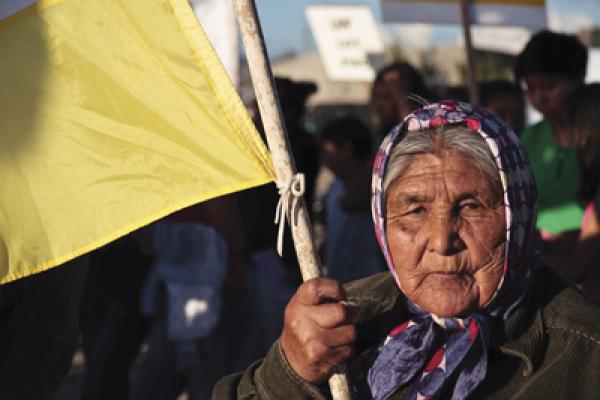PATAGONIA IS A land of myth. Like Siberia or the Australian outback, it’s one of those far-off places that, despite today’s round-the-clock global information flow, remain a mystery. Unfortunately, the myth of Patagonia as distant wild country has become a smokescreen for those who profit from extracting the region’s subsurface resources—silver, gold, uranium, lead, and oil. From their point of view, the less anyone knows about what’s happening, the better.
When I arrived in the South American region of Patagonia nearly a decade ago, the general public was almost entirely unaware of the mining bonanza about to burst onto the landscape, though government and corporate officials had already set the wheels in motion. After a few years setting down roots, I saw the mining activity rapidly picking up speed. As a result I spent a year filming a documentary about extractive industries and widespread conflict over land rights in the area. As is the case with so many resource-rich areas of the world, the communities hardest hit, and least rewarded, by mining are Indigenous Peoples.
The Mapuche people native to Patagonia lived semi-nomadically on both sides of the Andes, in what is now Chile and Argentina. In the 1880s, brutal military campaigns by the Chilean and Argentinian governments finished a two-century-old project that wiped out the majority of the population and left survivors scattered in the most isolated and inhospitable land around, which of course no white folks wanted. Until recently, when they discovered profitable mineral deposits under it.
Read the Full Article

